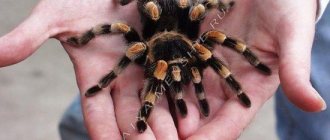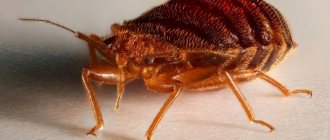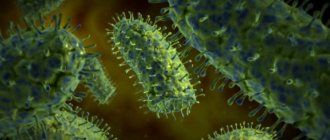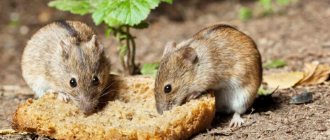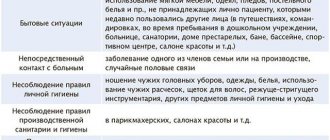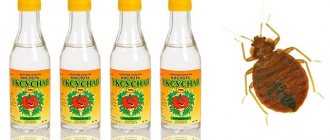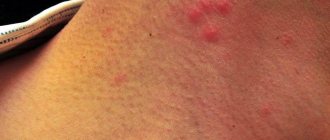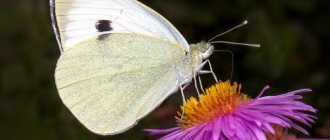Finding a victim - who eats bedbugs
In nature, everything is natural, cyclical, planned down to the smallest detail. Representatives of some species become food for others. This process is natural; it is difficult to control it from the outside (for humans), but it is not always necessary. For example, in the case of bed bugs (bed bugs, street bugs), on the contrary, it is advisable not to interfere with natural enemies to destroy these pests. Parasites cause harm because they drink the blood of people, and street individuals destroy crops and plantings. For this reason, this method of pest control may be considered as an additional option. But at the same time, you need to find out who eats bedbugs so as not to destroy these enemies:
- insect predators;
- animals;
- arachnids.
Moreover, fellow bedbugs destroy each other. Different types of such pests can act as enemies.
Domestic parasites feed only on the blood of warm-blooded creatures, so they do not attack their relatives.
The enemies of bedbugs in nature can be their fellows
Who are bedbugs and where did they come from?
Bedbugs are representatives of one of the most numerous orders of arthropods. An obligate synanthropic (life is closely connected with us) blood-sucking creature, which is an ectoparasite of animals and people.
They feed exclusively on blood, so a warm-blooded person with thin skin is the most desirable prey.
Its length is only 2 mm (depleted state), the full one has about 8. The color is from light brown to brown.
It is nocturnal, feeding in the second half of the night. In one bite, approximately 7 mg of blood is sucked out of the victim.
Aristotle wrote about these arthropods. They tried to treat snake bites and ear diseases.
For the first time, domestic bugs were found in the nests of tree sparrows, wagtails, and swallows. Among the forest, bugs live in hollows, tree bark, and ground cover.
They feel great at temperatures of 15-30 degrees above zero. At inappropriate times, they slow down in development, moving to a state of suspended animation. They live quietly for up to 14 months, feed, reproduce, and migrate.
A matter of chance can cause these creatures to appear even in your perfectly clean apartment. Only careful supervision and attentive cleaning will help prevent their settlement in time.
Insects feeding on domestic bed bugs
On the territory of a residential property, universal preparations are often used that destroy all types of domestic insects. But after such processing, toxic substances remain, which creates additional difficulties for existence. Many of the insects that live at home are capable of destroying bedbugs. In this case, processing of the object can be postponed until the number of parasite colonies is reduced.
Red cockroach
The main source of food is organic residues that appear as a result of human activity (crumbs, uneaten food, etc.). Cockroaches can survive for a long time in an apartment where there is no suitable food. They first destroy leather and paper products. But red cockroaches can also destroy insects. Under normal conditions, representatives of these species live in different parts of the object.
If necessary, cockroaches increase their search area for food and enter other rooms.
Red cockroach
House ants
These insects also primarily inhabit the kitchen. If there is not enough food here, they begin searching for food in an arc. The most dangerous are pharaoh ants. Their body length varies from 2 to 6 mm, which is less than that of bed parasites. For this reason, two or three of these individuals attack pests. The acid they secrete is lethal to the victim.
Ants attack an insect in a group
Flycatchers (centipedes)
This is a centipede of the labiopod class. It looks like a very unpleasant insect, but it is a natural enemy of bedbugs, as well as other household pests (spiders, termites, flies, cockroaches, etc.). Flycatchers bite, inject poison into the body of the victim, and then eat it.
Common flycatcher
House spiders
These are predators, they feed on various insects. However, flying pests (moths, flies) are the easiest to get into spiders' webs. Crawling individuals are less likely to be destroyed by spiders.
In addition, such predators usually weave nets in corners where crawling pests rarely appear.
House spider
Other types of bedbugs (cannibalism)
Domestic parasites are not often destroyed by representatives of other species of this order. This is due to the fact that predatory bugs do not enter a person’s apartment on purpose. Interspecific cannibalism usually occurs in nature. Then the predators attack other individuals of the family, which they themselves represent.
Green forest bug
Carpet beetles
These are small insects (body length is 1-12 mm). There are a large number of species, only a few live near other insects, because they find food sources here. Small bugs are in search of eggs of bed parasites and can destroy the organic remains of these pests (the shells of young individuals).
Leather beetle
Ticks
For the most part, bedbugs repel other pests with their scent. However, representatives of some species have their own natural enemies. For example, the soldier is attacked by ticks of the families Laelaptidae and Phytoseiidaede.
Mite
Other varieties
Among the natural enemies of bed parasites are silverfish. These insects live in different parts of the house. Bedbugs are closer to a person’s sleeping place, and silverfish are in dark, damp places (bathroom). Because of this, insects are rarely seen.
Food ants
Where do they come from?
Ants are equally likely to appear in a new house or apartment with fresh cosmetic renovations, as well as in old residential buildings.
Unlike wood ants, food ants do not build homes for themselves, but nest in secluded places: under the sink or behind a trash can, under tiles, inside walls. From there they go in search of food. Most often this is the kitchen, dining room and other places where people leave food items open.
One colony can have several nests at once, where the queen ant will migrate in case of danger. This greatly complicates the localization and destruction of the colony, but there are still several ways.
How to fight yourself
Find a colony and pour boiling water over the place
- pros: the most budget-friendly method
- disadvantages: not all ants may die, there is a risk of flooding the neighbors
Buy boric acid at the nearest pharmacy, make a food mixture, which the ants will gradually die by eating and taking away.
How much does it cost: up to 70 rubles
- pros: budget method, more effective than boiling water, boric acid is non-toxic for people and pets
- cons: not very effective - you may have to repeat the procedure
How to fight professionally
Use professional insecticides yourself
How much does it cost: up to 1000 rubles
- pros: high efficiency
- disadvantages: insects can quickly develop resistance to the poison in the product
Call a pest control service
How much does it cost: from 2500 rubles
- advantages: high efficiency, opportunity to ask questions to a specialist
- cons: the most expensive method
Having dealt with the ants, you can secure the result by treating all accessible joints, cracks and holes with silicone sealant.
Representatives of fauna that feed on bedbugs in the wild
It's not only at home that there are enemies of parasites. You need to find out who eats bedbugs and help reduce the population of such insects in the natural environment (on the site, in the field).
Harmful turtle
This is a representative of the family of shield turtles. The insect reaches 10-13 mm in length, the body is pale in color (light brown tones). The turtle is the main pest of grain crops, so there is nothing terrible in the fact that some of the individuals will be destroyed by the natural enemies of bedbugs of this species:
- side-walking spider;
- wolf spider;
- oxyopide;
- ants;
- hunter bug;
- phases.
- lacewing (young individuals of these insects attack the bug bug in the larval phase and destroy the eggs);
Harmful turtle
Toy soldiers
As mentioned above, such insects are attacked by representatives of certain types of mites. But soldiers can also be a threat to each other. They live in winter, gathering in large numbers in one place. Lack of food pushes insects to cannibalism.
Soldier bugs
Water striders
Birds are the main enemies of such bugs. They hunt for water striders, because these insects move along the surface of the water. In addition, they are attacked by representatives of another species - smoothies, as well as water mites.
Water strider
Shield insects
These insects come in many varieties. Representatives of each of them have their own natural enemies:
- young individuals of phasias eat bugs that live on cruciferous crops;
- telenomines feed on the eggs of berry, tree and guardsmen;
- spiders.
Scutellum
Pear lacemaker
This pest belongs to one of the types of bedbugs. It affects pear trees, as well as apple trees, plum trees, etc. For this reason, it is important to control the number of such insects. Their main enemy is horseflies (representatives of another species of the order Hemiptera). They feed on eggs and adults of the pear lacewing.
Pear lacemaker
Power supply
The diet of domestic bugs is monotonous. Insects are blood-sucking parasites. Bed bugs feed exclusively on human blood. The victim is found by the heat emanating from it, the smell of carbon dioxide, which is released when exhaling. Parasites have a keen sense of smell and can detect even slight odors. Therefore, the blood pulsating in the human body also smells like it.
Interesting!
In a situation where the issue concerns life and death, the parasite can bite a pet or rodent. However, such blood does not allow insects to lay eggs and move to a new stage of development.
Apart from blood, bedbugs feed on substances found in eggs. The larva develops due to them. In the stage of suspended animation, the female feeds for some time on the unformed eggs that are in her body.
Animals are natural enemies of bedbugs
Such insects are attacked mainly by small natural enemies. These can be hedgehogs, birds, rodents, etc. Representatives of different types of bedbugs have their own enemies. Animals do not attack those individuals that can cause harm.
Jerzy
Bedbugs are easy prey. They do not crawl too fast, and not all individuals fly. Catching food for a hedgehog is not difficult; it can hunt pests in the natural environment or in a person’s home (if the hedgehog is kept as a pet).
Hedgehog
Amphibians
The most dangerous enemy is the frog. She has many opportunities to capture and destroy her victims. For example, a frog catches a water strider with its long tongue. It also feeds on representatives of other species of insects.
The frog is a dangerous amphibian enemy
Birds
Many people eat plant foods. They attack bedbugs and other insects if basic food sources are insufficient. Among birds, there is only one omnivorous representative - a bird of the Accentor family (it hunts small creatures that move, even those that emit an unpleasant odor).
If there is not enough food, birds may become interested in bedbugs.
Rodents
The most dangerous is the field mouse. She does not feed on insects purposefully. Can consume them when they are sitting on spikelets. Rodents also eat bedbugs when there is no other food. The source of food is adults, larvae, but not eggs (they are difficult to find).
Rodents also attack bedbugs
Pets
Cats and dogs pay attention to crawling pests when a person does not notice such insects for a long time. Pets do not always eat bedbugs, but out of interest. In most cases, animals do not like their taste (if the insect is bitter, it is a stink bug).
Pets can “hunt” bedbugs out of curiosity
Bedbugs are visible to the naked eye at all stages of their development.
Adult bedbugs have a body length of 4-5 mm, and after saturation - up to 8 mm due to swelling of the abdomen. They are brown, well-fed - burgundy. That is, you can see them without a magnifying glass and without a microscope; even the smallest larvae are quite visible to the naked eye. And if you can’t find them, it only means that you weren’t looking hard enough.
By the way, we have had cases when people asked us what other insects could live on mattresses besides bed bugs. And when we arrive, we find crowds of small larvae on the bed. People do not understand that these are bedbugs, because at this stage of development they are still very small, translucent, not as wide as adults, and look partly like small spiders, partly like ants.
Means and methods of effective influence in the home
A dangerous enemy appears in a person’s home – a bed parasite. It multiplies rapidly, bites, and causes harm to humans, so it is necessary to begin the fight as soon as signs of infection of the object appear. The best results are obtained by methods that require the simultaneous use of different types of means. If insecticides are considered, it is important to use substances of different classes: pyrethroids and FOS or neonicotinoids.
Folk remedies will help scare away remaining pests or drive away the first emerging individuals.
Chemicals
Insecticides kill blood-sucking insects most quickly. It is recommended to use contact and combined action agents, since pests of this type will not be affected by drugs with a different operating principle (intestinal). Used for self-fighting
- aerosols: Raptor, Dichlorvos, Clean House, Combat;
- concentrates: Sinuzan, Tetrix, Get;
- powders: Clean House, Pyrethrum;
- pencils - “Mashenka”.
In addition, they are considering the possibility of attracting exterminators. Specialists treat the apartment/house using cold and hot fog methods. In this case, the toxic substance spreads throughout the room in the form of a fine suspension. Such particles contribute to the creation of a fog-like environment. They continue to hover for 2-8 hours, depending on the method of exposure.
For example, hot fog is more effective due to the fact that the suspension is retained and does not settle for up to 8 hours in a row.
Chemicals for bedbugs
Folk recipes
This group includes funds that are at hand. You can use strong-smelling herbs: wormwood, tansy, lavender. They will repel parasites. Plants should be placed inside furniture. You can prepare decoctions and wipe surfaces with liquids. A less effective remedy is essential oils. For hungry parasites, such substances do not create obstacles. Other options, more toxic:
- ammonia;
- turpentine;
- kerosene;
- vinegar;
- denatured alcohol;
- naphthalene.
Such components are used in pure form or mixed with other substances. However, in each case an unpleasant odor appears, which even a person can hardly tolerate.
Effective folk remedies
Features of the meal
House bugs Pests are nocturnal. They crawl out of their shelters in the dead of night, when a person is fast asleep. Bites on the human body appear from 3 am to 8 am. The most voracious female of all. An adult drinks about 7 ml of blood at a time. The male requires 5 ml to be completely saturated. Nymphs of different ages drink blood to a minimum. Severe contamination of a room when a whole colony comes out to eat is dangerous for humans.
Reviews
Veronica, 29 years old, Moscow
At my dacha there is a constant battle between species, sometimes (when I have a lot of free time) I watch from a hammock. The presence of various insects does not allow harmful bugs to multiply.
Anna, 32 years old, Bryansk
One day I decided to fight insects with the same weapon - through natural enemies. This didn't lead to anything good. We had to remove a lot more pests.
Anastasia, 44 years old, Tula
I try not to kill spiders either at home or on my property. I know that they are useful - they catch insects. But I always fight other enemies (cockroaches). They rarely kill bedbugs, but they cause a lot of inconvenience to us humans. At the same time, other insects are destroyed.
The best results in killing bedbugs can be achieved using several means simultaneously
Expert advice
Entomologist specialist Marinina Evgeniya Vitalievna, work experience – 16 years:
Marinina Evgenia Vitalievna
Entomologist, researcher. Work experience 16 years.
Ask a Question
• considering that natural enemies feed on bedbugs on the site, they try not to kill them, but such individuals can also cause harm, so I recommend treating the area with toxic substances in places; • at home it is much easier to destroy all insects with a universal insecticide: cockroaches, bedbugs, ants; watching how representatives of one species kill individuals of another takes too long, this can be fraught with more serious consequences for humans; • animals and birds are natural enemies that best cope with the task of controlling the number of insects: they destroy quite a lot of individuals, but not all, so that representatives of these species do not disappear from the face of the Earth.


